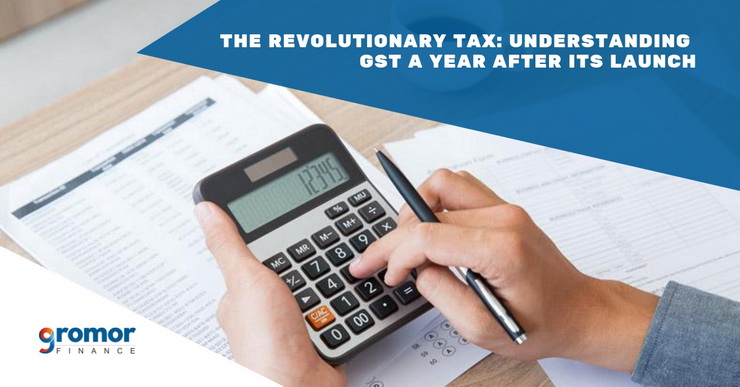GST is an Indirect Tax which has replaced many Indirect Taxes in India. The Goods and Service Tax Act was passed in the Parliament on 29th March 2017. The Act came into effect on 1st July 2017.
Features Of GST
Essentially, GST is a comprehensive, multi-stage, destination-based tax that will be levied on every value addition.
1. Multi-stage
There are multiple change-of-hands an item goes through along its supply chain: from the manufacturer to final sale to the consumer.
Let us consider the following case:
- Purchase of raw materials
- Production or manufacture
- Warehousing of finished goods
- Sale to wholesaler
- Sale of the product to the retailer
- Sale to the end consumer
Goods and Services Tax will be levied on each of these stages, which makes it a multi-stage tax.
2. Value Addition
GST will be levied on the value additions i.e. the monetary worth added at each stage to achieve the final sale to the end customer.
3. Destination-Based
Consider goods manufactured in Maharashtra and sold to the final consumer in Karnataka. Since Goods & Service Tax (GST) is levied at the point of consumption, in this case, Karnataka, the entire tax revenue will go to Karnataka and not Maharashtra.
Components Of GST
GST comprises of 3 components that are charged at different stages:
- CGST: Collected by the Central Government on an intra-state sale (Eg: Within Maharashtra)
- SGST: Collected by the State Government on an intra-state sale (Eg: Within Maharashtra)
- IGST: Collected by the Central Government for inter-state sale (Eg: Maharashtra to Tamil Nadu)
For sales within the state, the revenue is shared between the Centre (CGST) and the State (SGST). For sales between two states, there will only be one tax (IGST). The Centre will then share the revenue based on the destination of the goods.

Effectively, GST has replaced the following taxes:
- Central Excise Duty
- Duties of Excise
- Additional Duties of Excise
- Additional Duties of Customs
- Special Additional Duty of Customs
- Cess
- State VAT
- Central Sales Tax
- Purchase Tax
- Luxury Tax
- Entertainment Tax
- Entry Tax
- Taxes on advertisements
- Taxes on lotteries, betting, and gambling
Changes Brought In By GST
GST will improve the collection of taxes as well as boost the development of Indian economy by removing the indirect tax barriers between states and integrating the country through a uniform tax rate.
During the pre-GST period, the tax liability was passed on at every stage of the transaction and the final liability came to rest with the customer. This is called the Cascading Effect of Taxes where a tax is paid on tax and the value of the item keeps increasing every time this happens.
In the case of Goods and Services Tax, there is a way to claim credit for tax paid in acquiring input. What happens in this case is, the individual who has paid a tax already can claim credit for this tax when he submits his taxes.
In the end, every time an individual is able to claim input tax credit, the sale price is reduced and the cost price for the buyer is reduced because of a lower tax liability.
In addition to this, the flow of goods and services has become smoother, with the disappearance of checkpoints in different states.
In a few words, GST’s benefits include the establishment of a national market, improved ease of doing business in India, better productivity and efficiency, and improved compliance among taxpayers.
For unsecured small business loans, get in touch with Gromor Finance today!


